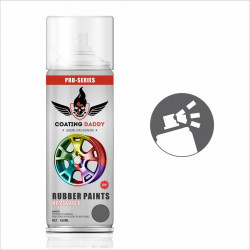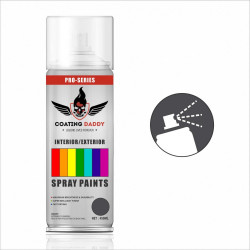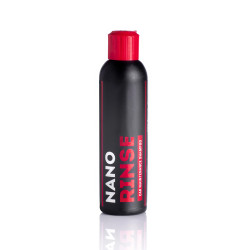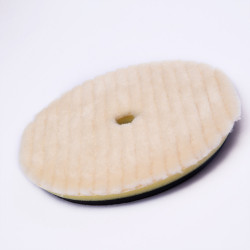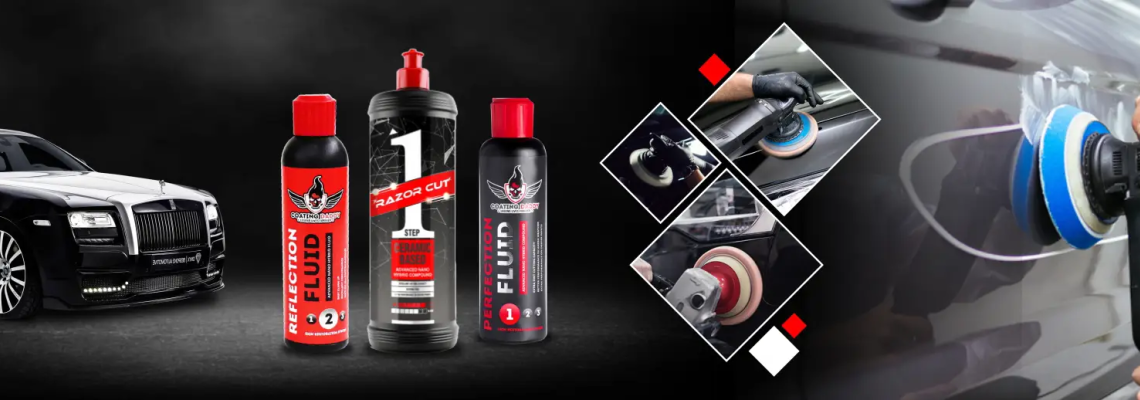
Maintaining the pristine appearance of your vehicle involves more than just regular washes and waxes. To truly bring out the best in your car's paint, you need to use high-quality polishes and compounds. These products play a crucial role in restoring, enhancing, and protecting your vehicle's finish. In this comprehensive guide, we’ll delve into everything you need to know about selecting and using these essential detailing products.
Understanding Polishes and Compounds
Before diving into the specifics, it’s important to understand what polishes and compounds are, and how they differ from each other. Both serve unique purposes in the detailing process.
What Are Polishes?
Polishes are designed to improve the appearance of your vehicle’s paint by smoothing out the surface and enhancing its gloss. They work by removing very fine imperfections and light oxidation that dull the finish. Polishes are less abrasive than compounds and are generally used after a compound to refine the surface.
Key Benefits of Polishes:
- Enhance Gloss and Shine: Polishes restore the depth and clarity of the paint, giving it a shiny, mirror-like finish.
- Remove Light Scratches and Swirls: They can address minor scratches and swirl marks, which are common in daily use.
- Smooth Surface: By eliminating fine scratches and imperfections, polishes create a smooth surface that is ideal for applying waxes or sealants.
If you’re looking for the right polish for your vehicle, check out our range of Polishes & Compounds to find the perfect match.
What Are Compounds?
Compounds are more abrasive than polishes and are designed to tackle deeper paint issues. They work by cutting through the top layers of paint to reveal a smoother surface underneath. Compounds are essential for more severe paint corrections, such as removing oxidation, heavy scratches, and water spots.
Key Benefits of Compounds:
- Remove Deep Scratches and Oxidation: Compounds are effective at eliminating serious defects that polishes cannot handle.
- Restore Clarity and Smoothness: They help in restoring the original gloss and smoothness of the paint.
- Prepare the Surface: Compounds prepare the surface for finer polishing and protective coatings.
For effective paint correction, explore our selection of Compounds which offer various levels of abrasiveness to suit different needs.
Choosing the Right Products
Selecting the right polish or compound is critical to achieving the desired results. Here’s a step-by-step guide to help you make the best choice:
1. Assess Your Paint Condition
Start by evaluating the condition of your vehicle's paint. This will determine whether you need a polish, a compound, or both.
- Minor Defects: If your paint has only light scratches, swirl marks, or dullness, a might be sufficient. Polishes are great for enhancing the shine and refining the surface.
- Severe Damage: For deeper scratches, oxidation, or other significant issues, a compound is necessary. Compounds can remove substantial defects and restore a more uniform surface.
For a detailed assessment of your paint condition, refer to our Detailing Tools section.
2. Determine the Level of Abrasiveness
Both polishes and compounds come in different levels of abrasiveness. Choosing the right abrasiveness is crucial for achieving the desired results without damaging the paint.
- Mild Abrasives: Ideal for minor imperfections and regular maintenance. Mild abrasives help enhance the shine and remove light scratches.
- Medium Abrasives: Suitable for moderate paint issues and restoration tasks. They offer a balance between cutting power and finishing quality.
- Heavy Abrasives: Best for severe paint damage. Heavy abrasives can tackle deep scratches and significant oxidation, but they require careful application to avoid over-cutting.
Check out our Detailing Tools page for a variety of abrasiveness levels and find the right product for your needs.
3. Select the Right Application Tools
Using the right tools is essential for applying polishes and compounds effectively. Here are some tools to consider:
- Polishing Pads: Different pads are available for various polishing tasks. Choose pads based on the product’s abrasiveness and the surface you are working on.
- Buffing Machines: For a more uniform application and better results, consider using an electric buffing machine. It provides consistent pressure and speed, making the application easier.
Explore our Polishing Pads and Buffing Machines sections to find the best tools for your detailing needs.
Application Tips
Proper application techniques ensure the best results and prevent damage. Follow these tips to get the most out of your polishes and compounds:
1. Clean the Surface
Before applying any product, ensure the surface is thoroughly clean and dry. Any dirt or debris can cause scratches and prevent the product from performing optimally.
- Wash Your Vehicle: Use a high-quality car wash soap to remove dirt and grime.
- Dry Thoroughly: Use a clean, microfiber towel to dry the surface completely before application.
For cleaning products, check out our Cleaners section.
2. Apply Product in Small Sections
Work on small sections of your vehicle at a time. This approach ensures even application and allows you to focus on specific areas.
- Apply Evenly: Apply a small amount of product to the pad or machine, and spread it evenly over the section.
- Use Consistent Pressure: Apply consistent pressure and avoid overworking the product.
For tips on product application, visit our FAQ section.
3. Follow Manufacturer’s Instructions
Always follow the manufacturer’s instructions for the specific product you are using. This will help you achieve the best results and avoid potential damage.
- Application Instructions: Adhere to the recommended amount of product and application technique.
- Removal Instructions: Follow the recommended method for removing excess product to avoid residue.
For more guidance, check out our Product Catalog
4. Test in an Inconspicuous Area
Before applying the product to the entire vehicle, test it in a small, hidden area. This step helps ensure that the product is compatible with your paint and prevents any unwanted outcomes.
Conclusion
Choosing the right polishes and compounds is essential for maintaining your vehicle’s appearance and protecting its paint. By understanding the differences between these products and selecting the appropriate ones for your needs, you can achieve a showroom-quality finish and extend the life of your vehicle's paint. Explore our Polishes & Compounds and Detailing Tools sections to find the perfect products for your detailing routine.
For personalized assistance and product recommendations, don’t hesitate to reach out to our customer support. We’re here to help you achieve the best results for your vehicle. Happy detailing!
 +1 63149-00171
+1 63149-00171 +91-120-4061367
+91-120-4061367








